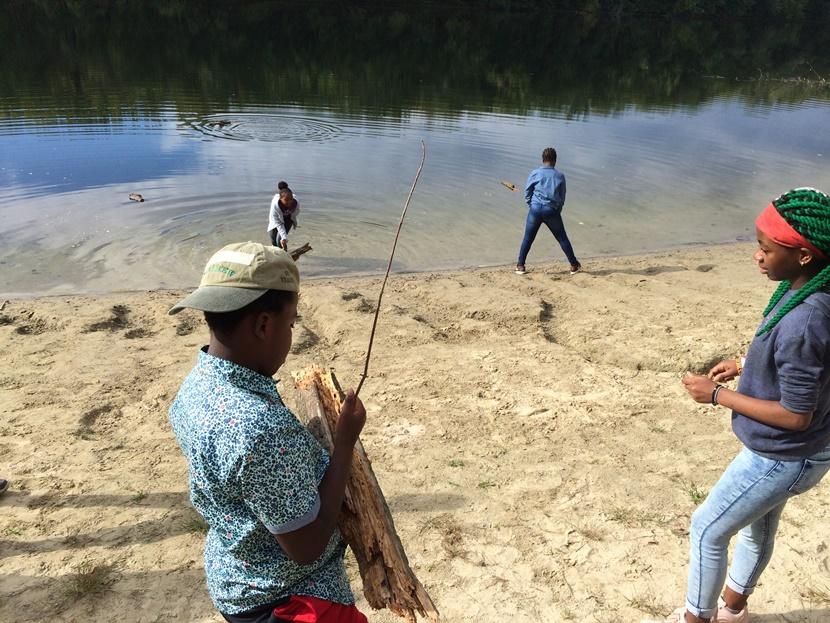- Tags:
- Education,
- Conservation Center

On a cloudy but warm Thursday recently, I met seven 6th-8th grade English Language Learning (ELL) students and their two teachers from Rundlett Middle School here at the Conservation Center. It was the first session of a pilot program with several exciting goals: to introduce our local ELL students, most often coming to Concord from central Africa, Nepal and Bhutan, to their new nature; explore various STEM concepts through outdoor lessons; and to use these outdoor experiences to frame writing activities back at school.
So here we were today to use our engineering skills to build some boats from natural materials and set them free in the river while observing river dynamics, using words and concepts like “float, sink, heavy, light.” At least, that was our plan. Alas, we were to find that the Merrimack was not going to provide much of any “river dynamics” this day, but despite that our group had a great time.
We took our time traveling out to the river, several students laughing at me as I tried to pronounce their names correctly. I covered my name tag and turned it back on them- none of them could remember my name either. We stopped to examine mushrooms and pull them apart to look for maggots. “Can you eat these?” the students asked. I showed them the many small worms eating the inside of the mushroom and, over a few squeals of disgust, said, “Not these ones!”
On one of the flat river bank areas currently exposed by the low river levels, I had staged a number of items: thin, flexible bittersweet vines, some paper birch bark, small strong sticks and twigs, and partially-decomposed branch pieces. These were our boat-building supplies. This is an activity I’ve been doing since I was little. I think my parents taught me but I’m not sure where exactly I picked this up. The basics of a successful boat are this: you find a piece of soft, partially decomposed branch. You test it out to see which way floats up (a critical step). You stick a tall twig in a squishy area as your mast. You thread a leaf or two onto the mast to serve as sails. Then you release your boat!
Almost everyone I’ve ever taught how to do this loves it. It is so satisfying to build your boat and then watch it stream away from you. The kids foraged for some of their own materials and then got down to building.
Our boats floated admirably- but didn’t go anywhere. There was hardly any current to take them away from us, something which deflated me a little bit but didn’t seem to affect the students much. They cheered, waded in the water, were silly or very serious as their preferences led them. It was hard for me to tell whether they had enjoyed the overall experience or not, but one major clue told me they did: they talked! If middle schoolers answer your questions, and then talk to you while you walk back on the trails, generally your lesson has been a success. Later their teacher confirmed that they all had a wonderful time and couldn’t wait to come back.
And come back they will, in October, May and June. Next up is leaves and trees. We will make leaf “color charts” to demonstrate the autumn progression of leaf pigments; do some bark and leaf rubbings; choose a small tree to do some measurements and observe the late fall atmosphere at the Conservation Center. Hopefully we’ll find a time for me to visit them at school and see some of their writing projects. I think our first session of this pilot project was very successful, and I am looking forward to seeing them again in a few weeks!
